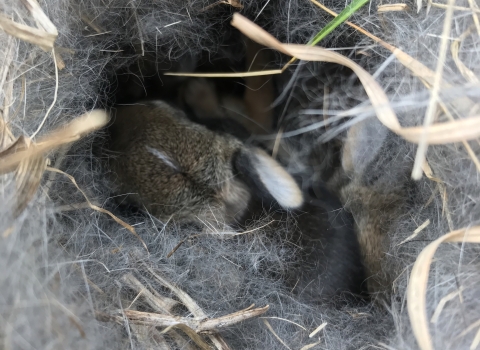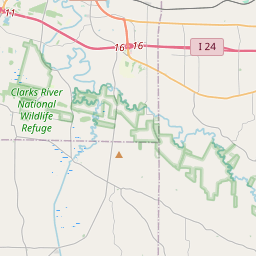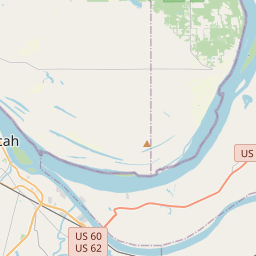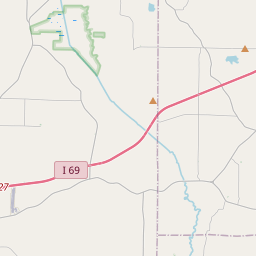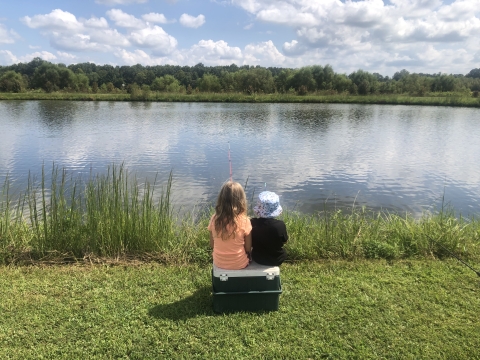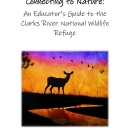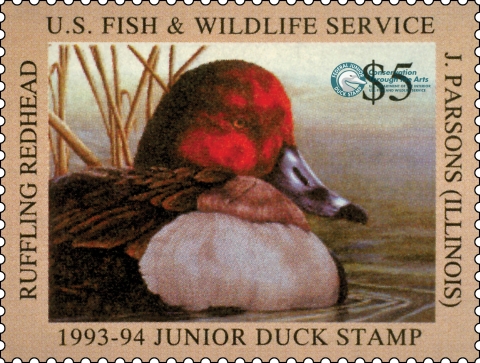Visit Us
From heritage traditions like hunting and fishing to the peacefulness of wildlife observation, there are a variety of opportunities waiting for you to experience the outdoors at Clarks River National Wildlife Refuge. Refuge lands are open from sun up to sun down. Come check us out!
Location and Contact Information
- Clarks River National Wildlife Refuge HeadquartersView Details91 US Highway 641 North Benton, KY 42025
About Us
In 1998, Clarks River National Wildlife Refuge became the 549th National Wildlife Refuge in the Country. Located in far western Kentucky, the refuge encompasses of one of the largest remaining bottomland hardwood forest in the region. Bottomland hardwood forests are one of the most biologically productive ecosystems on land. Freshwater mussels, amphibians, fish, and mammals are all found in abundance here. Additionally, migratory songbirds and waterfowl take advantage of this rich habitat on their long flights from nesting to wintering grounds. This diversity and abundance of wildlife provides ample hunting, fishing, and other recreational opportunities on the refuge.
What We Do
Clarks River National Wildlife Refuge staff work to protect, enhance, and manage a bottomland wetland ecosystem, along the East and West Forks of the Clarks River, for the benefit of waterfowl, migratory songbirds, and a wide array of other species associated with bottomland hardwood forest.
Some areas of the refuge, once forested, were converted to agriculture and pasture decades ago. The refuge maintains many of these fields through a cooperative farming program. Cooperative farmers are required to use filter strips or buffers in active fields adjacent to the Clarks River or any of its tributaries. The refuge identified farm fields that became most frequently flooded and began reforestation of these unproductive farmed wetlands in the winter of 2006.
Six waterfowl impoundments have been created since the refuge was established to enhance wildlife management opportunities. All six impoundments, combined, provide approximately 214 acres of manageable habitat in the form of standing agricultural crops, and wetland plants that are grown through active moist soil management.
Hunting and fishing are tools used to manage wildlife populations on the Refuge. Most hunting and fishing opportunities align with Kentucky state seasons and bag limits. Please see the refuge hunting/fishing permit for details.
The refuge manages native grasslands to benefit white-tailed deer, turkey, quail, migratory songbirds and small mammals.
All of this adds up to help make the refuge a great location for teachers and group leaders to share environmental education with their students, and for the general public to enjoy wildlife observation and interpretation opportunities.
Our Organization
Our Species
Clarks River National Wildlife Refuge is home to a variety of wildlife species associated with its habitat. The mosaic of habitats include bottomland hardwood forest, open water, seasonal and permanent wetlands, uplands, grasslands, and croplands.
Our Library
Our digital library is a one stop shop for refuge documents, management plans, and brochures.
Get Involved
We have good things we want to accomplish, but we can't do it all by ourselves. Find out how you can get involved through volunteer work, Kentucky Junior Duck Stamp participation, educational experiences, or support of our partners.
Projects and Research
At Clarks River National Wildlife Refuge inventory and monitoring efforts as well as research studies are conducted by staff, volunteers, outside partners, and universities to assist with resource management decisions as well as public use activities.
Some of the on-going research projects conducted on the refuge include:
- Monitoring Avian Productivity and Survivorship (MAPS)
- Bat Surveys
- Xero-hydric flatwoods



